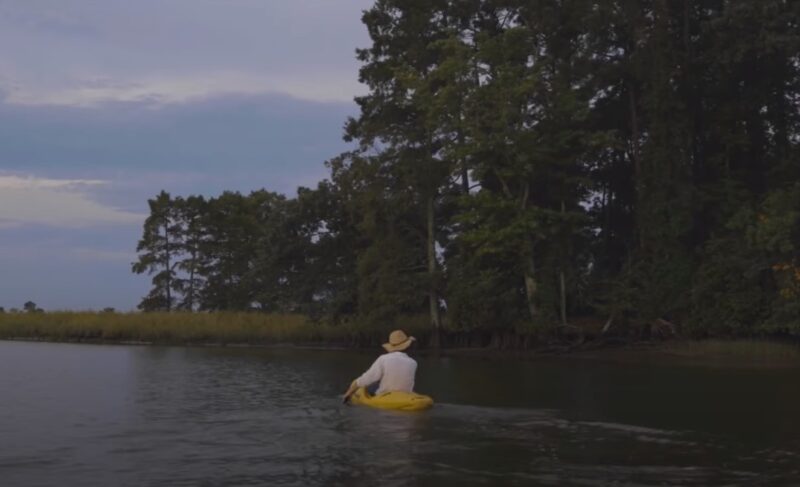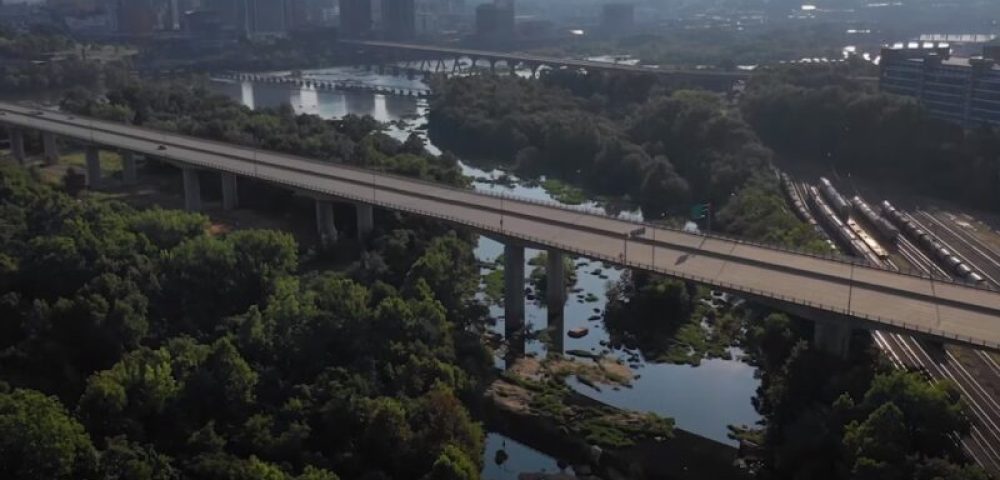The James River, flowing through the heart of Virginia, is a waterway steeped in history and natural beauty. Renowned for its pivotal role in American history, its rich biodiversity, and its recreational opportunities, the river is a vital and vibrant component of Virginia’s natural landscape.
Natural Beauty and Biodiversity

The river basin is a haven for a wide range of flora and fauna. The river’s diverse habitats, from its headwaters in the mountains to its estuary at the Chesapeake Bay, support an impressive array of plant and animal life.
Flora and Fauna
The James River basin is a sanctuary for a wide array of wildlife. It’s home to over 140 species of fish, making it a paradise for anglers and researchers.
Bird enthusiasts can spot a variety of species, from the majestic bald eagle to the elusive Prothonotary warbler. The river’s banks and surrounding areas also support a rich mammalian population, including deer, otters, and even the occasional black bear.
Unique Ecosystems
As the river winds its way from the mountains to the ocean, it passes through a kaleidoscope of ecosystems. The upper reaches of the James feature rolling hills and mountainous terrain, while its middle sections are characterized by fertile floodplains and vibrant wetlands.
The lower James, with its estuaries and marshes, is a complex and productive ecosystem, supporting both freshwater and marine life.
Recreational Activities

The James River is a haven for outdoor enthusiasts of all levels. From its exhilarating whitewater rapids to its tranquil paddling stretches, the river offers a variety of water sports opportunities.
The surrounding trails and parks provide an escape into nature, with scenic hikes, bike rides, and birdwatching opportunities.
Water Sports
The river is synonymous with adventure. Its waters cater to all levels of water sports enthusiasts.
The upper James offers challenging rapids for whitewater rafting and kayaking, while the calmer middle and lower sections are perfect for canoeing and leisurely boat tours. Fishing is a popular activity, with the river teeming with bass, catfish, and shad.
Trails and Parks
The river’s edge is lined with an extensive network of trails and parks, offering endless opportunities for outdoor activities. Hikers, bikers, and birdwatchers find solace in the scenic trails that wind through lush forests and along the riverbanks.
The James River Park System in Richmond is a prime example, offering urban green space with easy access to nature’s bounty.
Tourism and Commerce

Once a battleground for environmental restoration, it has emerged as an economic powerhouse, driving tourism and fueling commerce. Its revitalized waters and scenic beauty have attracted a surge of visitors, breathing life into local businesses and fostering a thriving economic landscape.
Tourism and Commerce
The revitalization of the James River has had a significant positive impact on the local economy. Its scenic beauty and improved health have boosted tourism, attracting nature enthusiasts, history buffs, and adventure seekers.
This influx of visitors supports local businesses, from outdoor outfitters to hospitality services.
Commercial Transportation
Moreover, the James River continues to be a vital corridor for commercial transportation. Its navigable waters are essential for the transport of goods, playing a key role in the regional economy.
Environmental and Conservation Efforts

The river, once burdened by pollution and degradation, has emerged as a beacon of hope for environmental restoration. A testament to the power of collective action, the river’s remarkable turnaround serves as a reminder of our ability to heal and protect our natural resources.
Pollution Challenges
Historically, the James River has faced a barrage of environmental challenges. Industrialization and urban development along its course led to significant pollution issues.
By the mid-20th century, the river was suffering from high levels of industrial waste, sewage, and runoff from agriculture and urban areas. This pollution not only degraded the river’s natural beauty but also threatened the diverse ecosystems it supported.
Turning the Tide
In response to these challenges, a concerted effort by environmental groups, government agencies, and local communities has been underway for several decades. Key initiatives have included:
- Clean Water Act Enforcement: The implementation of the Clean Water Act played a crucial role in setting standards and regulations to control pollution and improve water quality.
- River Cleanup Programs: Regular cleanup events have mobilized community volunteers to remove trash and debris from the river and its banks.
- Habitat Restoration Projects: Efforts to restore wetlands, improve fish passages, and plant native vegetation have been crucial in reviving the river’s natural habitats.
Conservation Initiatives
These conservation initiatives have borne fruit, leading to a remarkable improvement in the health of the James River. Today, it is celebrated as one of the most successful river restoration stories in the United States.
The river’s return to health has been a beacon of hope, demonstrating the positive impact of sustained environmental stewardship.
The Historical Significance
The James River, snaking its way through the heart of Virginia, is not merely a waterway; it is a living embodiment of America’s history, a silent witness to the nation’s transformative journey. Its banks have borne the weight of pivotal moments, each leaving an indelible mark on the nation’s narrative.
Colonial Beginnings
The establishment of Jamestown along the James River marked the beginning of European colonization in North America. This event holds immense historical significance, representing the first steps in the formation of what would become the United States.
A Crucial Role in the Civil War
During the Civil War, the James River was more than a mere geographic feature; it was a strategic artery. The river’s role as a transport route for troops and supplies was pivotal, influencing the course of the war and shaping the nation’s history.
FAQ
Are there any rare bird species that can be spotted along the river banks?
Yes, the James River is a habitat for the rare Swainson’s Warbler, known for its elusive nature and distinctive loud song. Birdwatchers often seek this species in the dense underbrush along the river’s banks.
What are some lesser-known recreational activities available?
Beyond the popular activities like rafting and fishing, the James River offers unique opportunities like guided historical tours on boats, moonlight kayaking, and birdwatching excursions that focus on the river’s diverse avian population.
Has the river played a significant role in history besides the Civil War and colonial beginnings?
Yes, the James River was integral during the Revolutionary War, particularly during the Siege of Yorktown. The river’s strategic location allowed for crucial naval battles and the transport of troops and supplies, influencing the outcome of the war.
What unique fish species can be found in the river?
The James River is home to the Atlantic sturgeon, a prehistoric fish species known for its distinctive armored plates and long snout. This species, once abundant but now endangered, is a remarkable sight for wildlife enthusiasts.
What are some of the unique plant species found in the ecosystem?
The river’s diverse ecosystems support unique plant life like the Virginia bluebells in its floodplain forests and the rare sensitive joint-vetch in its tidal freshwaters, both of which are region-specific and add to the river’s ecological richness.
How has the James River influenced local culture and traditions in Virginia?
The James River has deeply influenced local culture, inspiring a rich tradition of folklore, music, and art. Communities along the river celebrate its history and beauty through festivals, river-themed artwork, and songs that reflect the river’s significance in Virginian heritage.
Final Words
The James River stands as a powerful symbol of the resilience of nature and the importance of historical preservation. Its story is one of transformation and revival, a testament to the enduring spirit of conservation and stewardship.
As we look to the future, the James River serves as a reminder of our collective responsibility to protect and cherish our natural and historical treasures for generations to come.












